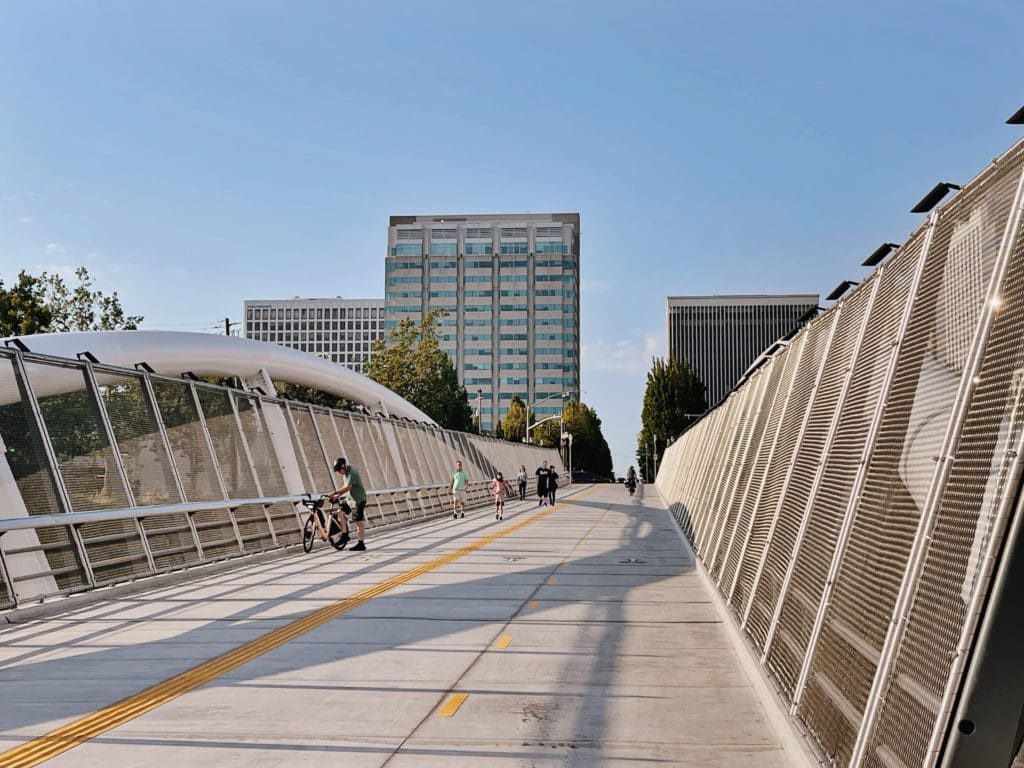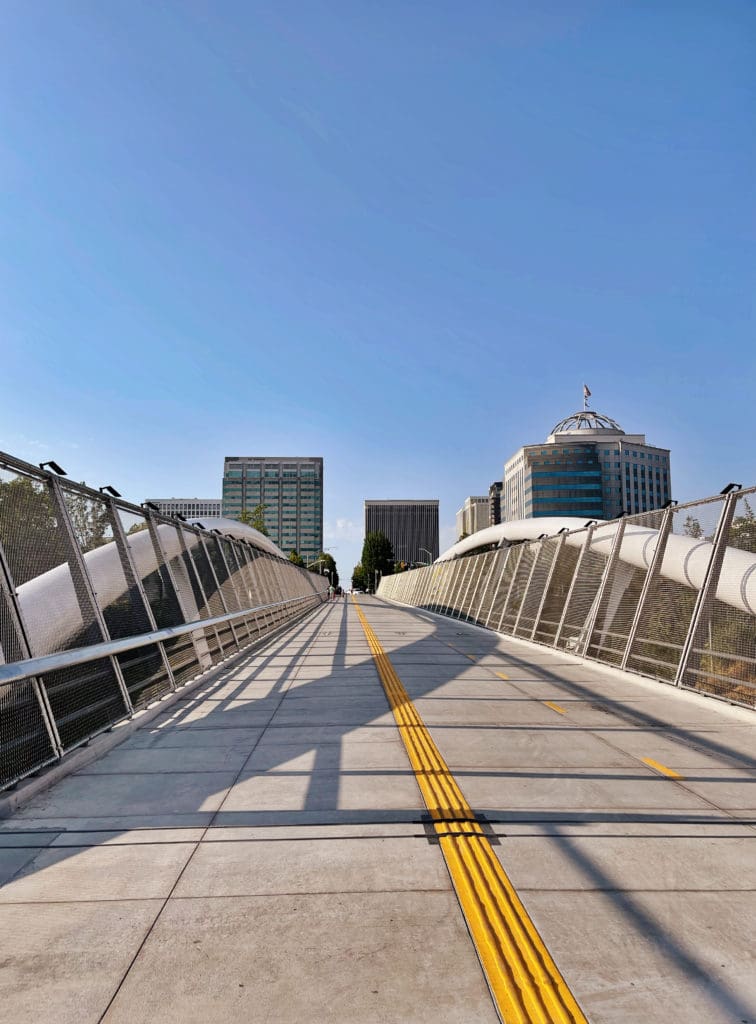The new carfree bridge in Portland spans a highway — and offers another example of freeway fighting

By Hanna Brooks Olsen
Today’s freeway fighters, who are proposing the removal of entire sections of highways within our cities, are often met with skepticism and even disdain. Congressman Earl Blumenauer gets it — he’s been battling with car-centered infrastructure for more than 30 years. That fight, which he has taken to every level of government, paid off in July when the City of Portland opened a much-needed carfree overpass and named it after him.
The Earl Blumenauer Bicycle and Pedestrian Bridge spans a busy, often-congested span of highway that bisects Portland from East to West. The bridge connects two neighborhoods — Central Eastside and Lloyd District — and provides a safe way for commuters and recreational walkers and cyclists to get away from dangerous auto traffic. And while it may not be a complete removal of the highway, it does begin to rebuild some of the damage caused by it.
It’s a tangible, visible example of what can happen when you fight for the future you want. From the Portland Bureau of Transportation:
“Originally called “Sullivan’s Crossing” during its design and development, the bridge was officially named the Congressman Earl Blumenauer Bicycle and Pedestrian Bridge by Transportation Commissioner Chloe Eudaly in May 2019, to honor the Congressman’s steadfast, decades-long advocacy for cycling and pedestrian issues in Portland and across the country.”
Decades of Activism At All Levels
Calls for full highway removal as a means of restoring walkability are still largely viewed as impossible by many communities. But there are other ways to plan and build infrastructure which can work around the huge, dividing structures. Rep Blumenauer has fought for almost all of them.
Cyclists and walkers may not even know his name, but they have Rep Blumenauer to thank for the robust networks of bike lanes and sidewalks that make Portland a liveable city. As a freshman state legislator in the 1970s, he passed the Bike Bill, which requires pedestrian and bicycle improvements on every single transportation project that received funding from the state. When freeway construction couldn’t be stalled, he argued for lidding that would minimize the damage to neighborhoods and communities. In the nation’s Capitol, he has proposed gas taxes that made the freeway fans roll their eyes and built bipartisan bridges through the unifying nature of cycling. Of the new bridge that bears his name, Blumenauer called it “a realization of a vision that goes back 30 years when I was the director of public works for the city of Portland.”

More Work is Still Needed
Bridges that remove cyclists and pedestrians from car traffic present a huge improvement with regard to safety. By eliminating instances when different modalities cross paths — specifically cars and anyone else — cities can help reduce deaths and injuries on their roadways. But that still doesn’t address the impact that cars have in cities in general.
The new Blumenauer bridge does connect two important areas of Portland’s residences, but riders and walks will still need to navigate difficult streets while dealing with the impact of gas-powered vehicles. Car-free bridges don’t mean car-free streets, and the ecological footprint of cars still remains. This is why freeway fighters call for removals as well as mitigations.
The bridge does, though, stand as an example of the tenacity required to make changes to our car-centered design and development standards.
A years-long fight over the future of the I-5 bridge and Columbia River crossing between Oregon and Washington has become a prime example of these fights. Blumenauer and many others want to ensure that the new bridge has the capacity for light rail. Others, including lawmakers and pro-car activists, don’t want to include that additional infrastructure. In an interview with Willamette Week, he called it “one of the great frustrations of my career,” and underscored the need to build extensively for alternative modes of transportation.
“You cannot satisfy the demand for a low carbon future if it’s simply going to be automobiles, even if you’re going to provide more bike and pedestrian access,” he told the paper. “It has to have rail.”
Demonstrating his brand of progressive certainty, he added that he is “convinced it will.”